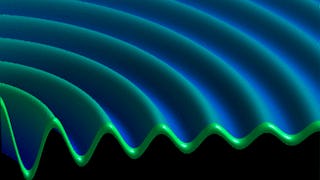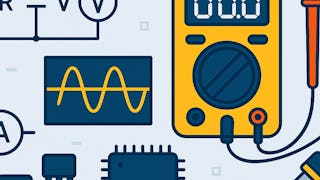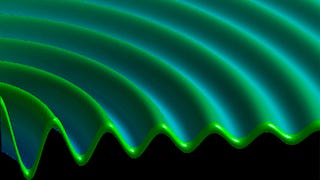In this course students learn the basic concepts of acoustics and electronics and how they can applied to understand musical sound and make music with electronic instruments. Topics include: sound waves, musical sound, basic electronics, and applications of these basic principles in amplifiers and speaker design.

Gain next-level skills with Coursera Plus for $199 (regularly $399). Save now.

Fundamentals of Audio and Music Engineering: Part 1 Musical Sound & Electronics


Instructors: Robert Clark
93,304 already enrolled
Included with
(592 reviews)
What you'll learn
Students will be able to explain basic concepts of acoustics.
Students will be able to apply the concepts of acoustics to the creation of music and sound.
Skills you'll gain
Details to know

Add to your LinkedIn profile
3 assignments
See how employees at top companies are mastering in-demand skills

There are 6 modules in this course
Introduction to oscillations and sound waves, simple oscillating systems, sound pressure, sound waves, the speed of sound, wavelength, frequency and pitch, sound pressure level, loudness, making sound, properties of musical sound versus “noise”. Electronics fundamentals - charge, current, voltage, power, resistance, Ohm’s law, DC circuits, finding currents and voltages in simple circuits.
What's included
13 videos8 readings
Reflection and absorption of sound, resonances in air columns, resonances in enclosures and rooms, diffraction and diffusion of sound, reverberation, principles of designing a good music studio. AC signals, phase and complex numbers, capacitors, inductors, transformers, impedance, AC circuits and AC circuit analysis, simple filters (high-pass, low-pass, band-pass)
What's included
13 videos1 assignment
Transistors, vacuum tubes, opamps, amplification, power gain, single-stage amplifiers. Converting sound to electrical signals –microphones and guitar pickups, converting electrical signals to sound – loudspeakers
What's included
18 videos
Electric guitar electronics, pickup design, pickup placement and tone, volume control circuits, tone control circuits. Overview of a simple guitar amplifier, power supply, volume control, preamp, tone control, power amp section.
What's included
15 videos1 assignment
Designing speaker enclosures, basic principles, interaction of speaker driver with the cabinet, why a cabinet at all? Speaker designs for home stereo, crossover networks, guitar amplifier (open) speaker enclosures, bass amplifier (closed and vented) speaker enclosures.
What's included
8 videos
Building the guitar amplifier, how to solder, getting the amp to work - systematic testing and troubleshooting. Visualizing sound waves, frequency content and tone, signal modification in electro-acoustic systems, tube amplifiers and distortion, wah pedal, talk box.
What's included
14 videos1 assignment
Instructors


Offered by
Explore more from Electrical Engineering

Korea Advanced Institute of Science and Technology(KAIST)

Birla Institute of Technology & Science, Pilani

Korea Advanced Institute of Science and Technology(KAIST)
 Status: Preview
Status: PreviewGeorgia Institute of Technology
Why people choose Coursera for their career




Learner reviews
592 reviews
- 5 stars
73.64%
- 4 stars
19.59%
- 3 stars
3.37%
- 2 stars
1.52%
- 1 star
1.85%
Showing 3 of 592
Reviewed on Oct 20, 2016
Excellent Course. I can't wait for part 2 after this course. Thank you to instruction for sharing their experience and knowledge with us.
Reviewed on Nov 27, 2017
very nice course to learn new something about the fundamentals of audio and music engineering, musicalsounds and eloctronics
Reviewed on Oct 26, 2016
Absolutely Excellent Course, Fantastic teaching; I found the circuit analysis for the last two weeks really challenging (in a good way). Very glad I stuck with it and finished it.
Frequently asked questions
To access the course materials, assignments and to earn a Certificate, you will need to purchase the Certificate experience when you enroll in a course. You can try a Free Trial instead, or apply for Financial Aid. The course may offer 'Full Course, No Certificate' instead. This option lets you see all course materials, submit required assessments, and get a final grade. This also means that you will not be able to purchase a Certificate experience.
When you purchase a Certificate you get access to all course materials, including graded assignments. Upon completing the course, your electronic Certificate will be added to your Accomplishments page - from there, you can print your Certificate or add it to your LinkedIn profile.
Yes. In select learning programs, you can apply for financial aid or a scholarship if you can’t afford the enrollment fee. If fin aid or scholarship is available for your learning program selection, you’ll find a link to apply on the description page.
More questions
Financial aid available,





